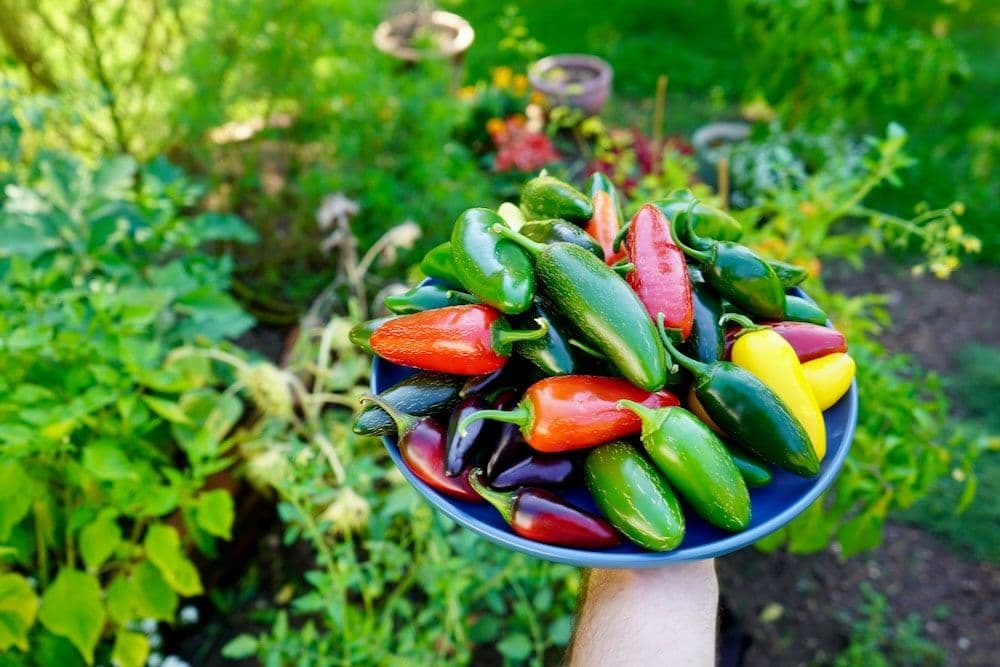
Introduction
In this article, we aim to answer the question, “What is a jalapeño pepper?” and examine the properties and types of jalapeños. If you're a fan of spicy foods, you've probably heard of jalapeños many times and may even be a devoted enthusiast. Interestingly, people have been flavoring their food with jalapeños for approximately 6,000 years. Originally native to Mexico, this strong and spicy pepper is now also cultivated in California and across the southwestern United States.
This flavorful and spicy pepper is used in a variety of sauces and dishes, helping create and develop new flavors. We will further explore the varieties, benefits, planting methods, and more about this pepper. Stay with us until the end of the article.
What is a Jalapeño Pepper, and Its History
The name “jalapeño” (also pronounced “jalapeno”) is the Spanish translation of “Xalapa,” the capital of Veracruz, Mexico, where jalapeño peppers were traditionally cultivated. Jalapeño is one of the well-known types of peppers, and its appearance is quite similar to that of bell peppers, though its spiciness is notably different. This pepper was first grown and harvested in Mexico. It was used by the Aztecs before the Spanish conquest, with a history of use in the Americas going back thousands of years. However, it wasn’t long before people began cultivating jalapeños because of their exceptional flavor, and since then, they’ve been grown and harvested worldwide. Today, jalapeños are a staple in many dishes and are widely used as a powerful flavor enhancer.
Jalapeño peppers are spicy, though their heat level can vary depending on the time of planting and harvesting. Jalapeños are a delicious seasoning for various dishes, making them suitable for both fast food and traditional cuisine, offering a remarkable flavor in either case. Most jalapeños are dark green and range from 2 to 3 inches in length, though some turn red, purple, or other colors upon ripening. Certain jalapeño varieties are spicier than others, and we’ll explore those in detail further on. You can buy jalapeño peppers fresh, pickled, or as jalapeño sauce.
Types of Jalapeño Peppers
Jalapeños come in a variety of types, with differences in color, flavor, and quality. Below, we will examine five remarkable varieties of jalapeño peppers from different perspectives.
Goliath Jalapeño (Goliath Jalapeños)
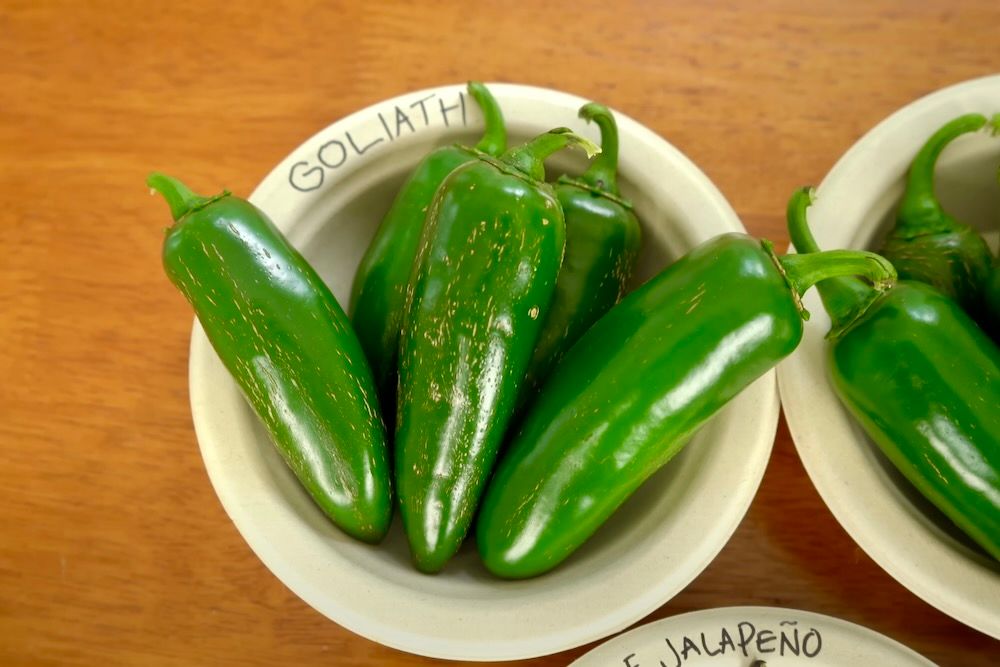
If you're looking to grow the largest jalapeño peppers, the “Goliath” variety may be exactly what you're after. This large, high-yielding, and flavorful variety produces big, uniform pods. The average weight of Goliath jalapeños is around 57 grams, and it is a hybrid variety specifically bred for larger sizes.
TAM Jalapeño (noTAM Jalape)
The University of Texas developed this variety to be milder than traditional jalapeños. Therefore, if you enjoy the flavor of jalapeños but prefer to avoid the intense heat, this variety is one of the best options. It also thrives well in hot and dry regions.
Yellow Jalapeño (Jaloro Jalapeño)
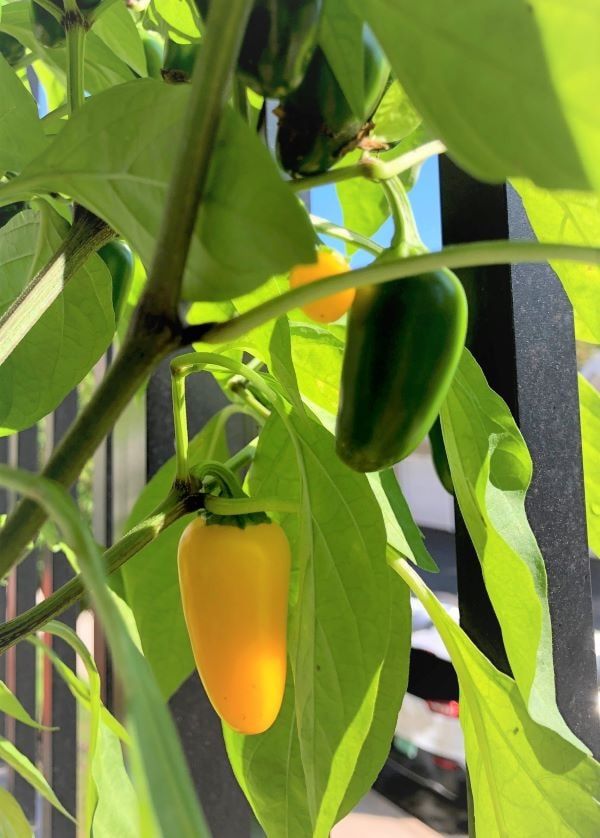
If you're looking to add new colors to your garden or cooking, the Jaloro pepper might be the right choice for you. The name of this pepper comes from the Spanish word oro, meaning “gold.” The peppers start yellow and almost golden, eventually ripening to a deep red color.
While the Yellow Jalapeño is visually striking with its vibrant color, it's not the best choice for culinary use. The pods of this variety are full of seeds, with thin walls and smaller in size. However, Jaloro can be an excellent option for adding beauty to your garden.
Purple Jalapeño
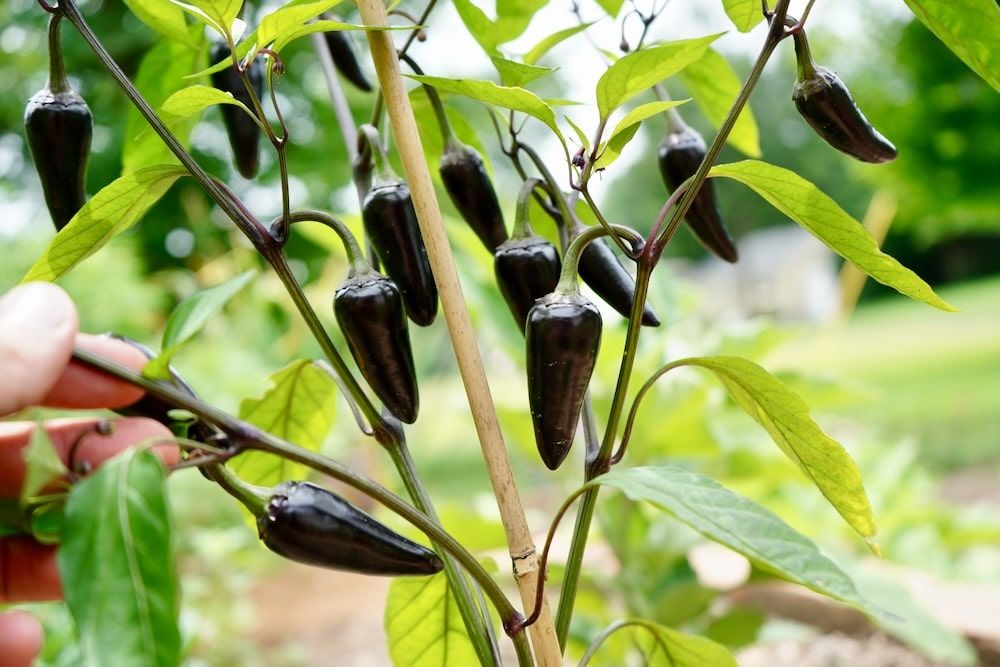
The Purple Jalapeño is unique due to its beautiful color. Its deep, almost black hue comes from anthocyanins (the pigment responsible for purple coloration) in the plant. This purple pigment is a powerful antioxidant, and because of this antioxidant content, the Purple Jalapeño is considered to be healthier than other varieties.
The Purple Jalapeño has a milder heat and flavor, and is mainly used for ornamental purposes in gardens!
Mattapeño Jalapeño
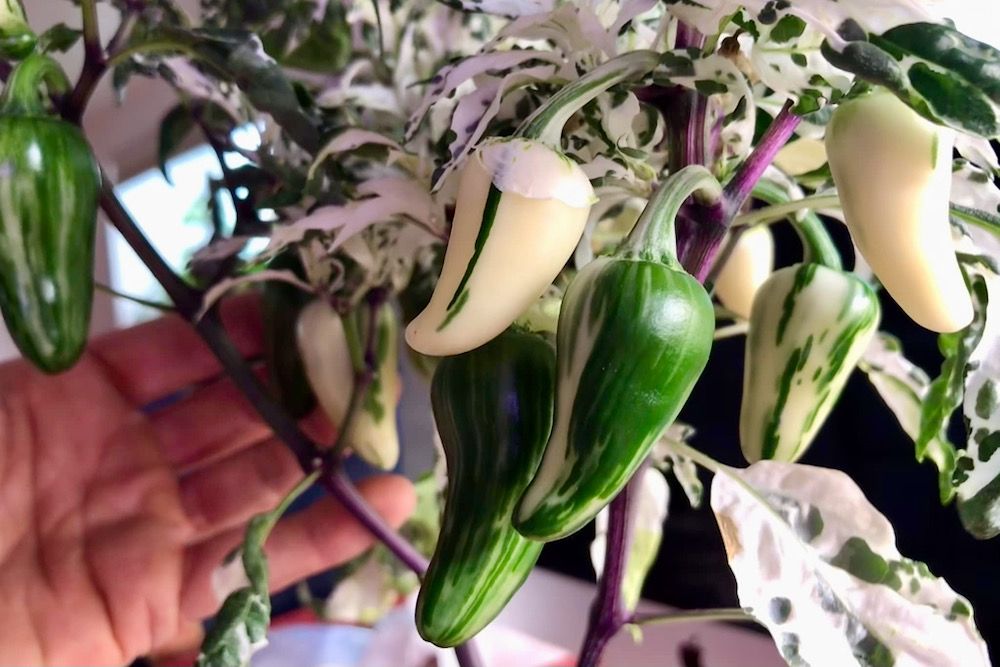
Finally, let's discuss the most unique and visually striking variety of jalapeño, the “Mattapeño.” This striped jalapeño variety features patterns of vibrant white and green foliage.
This variety was discovered when Matt O., a commercial greenhouse grower, noticed an unusual seedling with white leaves. He cultivated and preserved seeds from this unique plant, eventually sharing it with the pepper-growing community.
Some Mattapeño plants have branches with white foliage artistically speckled and striped with green. This variety is still undergoing development and refinement.
Health Benefits of Jalapeño Peppers
In each serving, the nutrients in a jalapeño include:
Calories: 4
Fat: 0 grams
Carbohydrates: 1 gram
Protein: 0.1 grams
Fiber: 0.4 grams
Among the key benefits of jalapeños are their high content of Vitamin A, Vitamin C, and Potassium. Jalapeños are also rich in Carotene (a powerful antioxidant that helps combat cell damage). Many of the health benefits of jalapeños come from a compound called Capsaicin. Capsaicin is the substance that gives peppers their spiciness. In the following sections, we will explore other health benefits of jalapeños.
Increased Longevity
In a study conducted over 19 years, researchers found that individuals who consumed spicy peppers several times a week were 13% less likely to die compared to those who ate less or no peppers at all. Researchers believe that the capsaicin in peppers plays a role in improving blood circulation and preventing obesity, which contributes to the increased longevity of those who regularly consume peppers.
Pain Relief
Capsaicin in jalapeño peppers acts as a natural pain reliever, but only when applied directly to the skin—although it’s best not to do this directly with the pepper! To safely benefit from capsaicin's soothing effects, you should use creams, ointments, or patches containing capsaicin. If you suffer from arthritis, muscle pain, or nerve issues, using capsaicin-infused products can be helpful for pain management.
Weight Loss and Blood Sugar Control
You may have heard that spicy foods help with weight loss. Studies show that regularly consuming peppers can accelerate metabolism, assist in fat burning, and help reduce appetite.
Additionally, eating chili peppers before a high-carbohydrate meal may help prevent a spike in blood sugar levels.
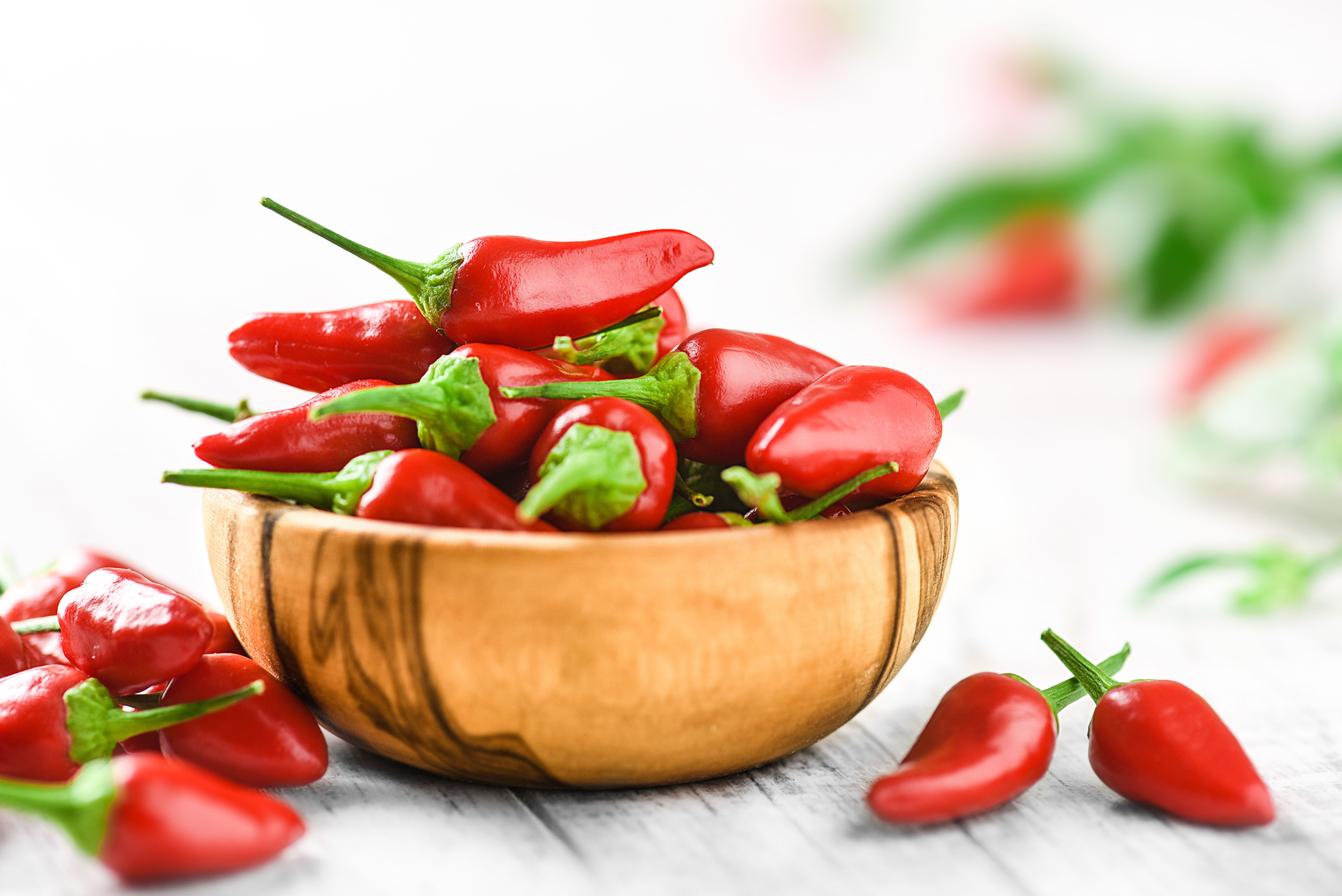
Safety Warnings
Contaminated jalapeños can cause the spread of diseases, including salmonella. Be sure to wash all produce thoroughly before consumption. If you are pregnant or have a weakened immune system, it's important to consult with your doctor before consuming jalapeños.
Some studies suggest that the capsaicin in jalapeños may worsen heartburn and cause issues for individuals with irritable bowel syndrome (IBS). If you have a digestive disorder, it’s better to avoid consuming jalapeños.
How to Prepare, Eat, and Store Jalapeños
When cutting jalapeños, always wear gloves. Capsaicin, which is concentrated in the interior of the pepper, is difficult to wash off your hands. If you touch your face with jalapeño-covered hands, it can burn and irritate your eyes, mouth, and nose.
If you soak chopped jalapeños in brine for at least half an hour before eating or cooking, it will reduce some of their heat.
Fresh jalapeños will last up to 3 weeks if wrapped in paper towels and stored in the refrigerator.
Jalapeño Pepper Cultivation
Shabnam Sahar Alvand Agricultural Processing Company, a subsidiary of Sahar Food Industries Group, specializes in agricultural activities. In 2020, this company began an experimental and research-based cultivation of jalapeño peppers in one of the farms in Hamadan County. The goal of this experimental cultivation was to gain experience and prepare for the large-scale cultivation of jalapeños in the region.
The results from the trial cultivation showed that jalapeño peppers are well-suited to the climate of Hamadan province, with a high potential for large-scale farming of this pepper variety in the area. In the years 2021, 2022, and 2023, jalapeños were grown commercially in Hamadan. In addition to commercial cultivation, various jalapeño varieties have been experimentally planted each year to gather more data. The goal of this initiative is to promote and expand the cultivation of jalapeños and incorporate them into the food basket of our dear nation.
To learn more about the jalapeño pepper farms, you can watch the 2-minute video below.
In this regard, efforts have been made to minimize the use of pesticides and chemical fertilizers throughout the planting, care, and harvesting processes. Additionally, the use of organic fertilizers, such as animal and poultry manure, has been integrated within scientifically accepted and proven principles.
It is important to note that, due to the significance of water resources in the country and the limitations caused by reduced rainfall in Hamadan province, the irrigation system employed in this project is drip irrigation. The irrigation cycles have been designed to be regular and efficient, minimizing water waste. Based on the results obtained, the water requirements for this crop during its growth period are relatively low, and it is expected that in the coming years, this type of cultivation will replace high-water-demanding crops in Hamadan province.
As a result, Sahar Food Industries, by conducting numerous tests and under the supervision of a professional team of agricultural and food industry experts, has succeeded in offering a valuable product to the market after harvesting the peppers and conducting fermentation processes, ensuring high-quality production.
Sources:
https://peppergeek.com/types-of-jalapeno-peppers/
